I Need Help Shifting Going Up Steep Hills.
Topic 12728 | Page 1
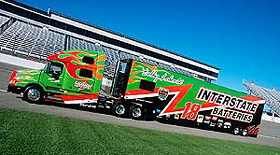
Hi everyone, I used to drive over 8 years ago, and i am now going to orientation with Shcneider. Schneider accepted my old experience and said i could just have 4 days orientation then bam right in a truck all by myself. So i asked if i could still get extra training because i want to be as prepared as possible once i have my own tuck. and they agreed and i am going for 3 week training instead. I am relieved . but when i drove a truck before i only went up a steep hill once and i panicked because i was afraid to shift out of gear to the next lower gear needless to say the truck died and now the truck was stopped on a steep incline with cars right on my bumper. i waved everyone to go around me. i was terrified i was going to roll backwards. i finally got it into gear and made it slowly up the hill and still was afraid to change gears. I need help to understand how and when i shift to the next lower gear as i go up, or am i going about shifting the wrong way? Can anyone help?
Downshift at 1100 rpm
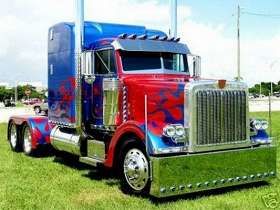
Thanks Shiva, i appreciate it.
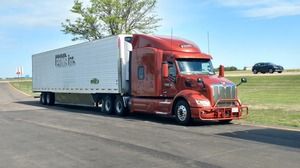
Also, when you downshift, double clutch until you are comfortable with downshifting. It can be a little un-nerving until you get more at ease with this.
Ernie
Double Clutch:
To engage and then disengage the clutch twice for every gear change.
When double clutching you will push in the clutch, take the gearshift out of gear, release the clutch, press the clutch in again, shift the gearshift into the next gear, then release the clutch.
This is done on standard transmissions which do not have synchronizers in them, like those found in almost all Class A trucks.
You got stopped "on the steep incline". Yes, it's fast footwork between the brake, accelerator and the clutch.
But remember this important fact: unlike a car's hydraulic brakes, truck air brakes have a tiny delay between your foot release and the brake shoes release. That important delay gives your big diesel engine enough time to speed up for the power to pull out of the stop without rolling back.

What I do to keep up momentum is shift to the next lower gear 2-300 rpms above what a normal downshift would be. So if you down shift at 1100 rpm then I would start the shift at 13-1400 because you will lose speed and momentum just processing the shift. don't wait until you are lugging the motor or by the time you get into the next gear it will be time to shift again.
Now our motors are probably different from what most of you are running. I need to keep the rpm at 17-1800 when pulling a pass loaded or I will lose too much speed and lose it quickly. Once I get below 1500 it really starts to drop speed and the turbo actually gets hotter. When you use the gearing to get up the hill as opposed to turbo boost the motor stays cooler and so does the turbo.
OOS:
When a violation by either a driver or company is confirmed, an out-of-service order removes either the driver or the vehicle from the roadway until the violation is corrected.

What I do to keep up momentum is shift to the next lower gear 2-300 rpms above what a normal downshift would be. So if you down shift at 1100 rpm then I would start the shift at 13-1400 because you will lose speed and momentum just processing the shift. don't wait until you are lugging the motor or by the time you get into the next gear it will be time to shift again.
Now our motors are probably different from what most of you are running. I need to keep the rpm at 17-1800 when pulling a pass loaded or I will lose too much speed and lose it quickly. Once I get below 1500 it really starts to drop speed and the turbo actually gets hotter. When you use the gearing to get up the hill as opposed to turbo boost the motor stays cooler and so does the turbo.
I drive a 10 speed Freightliner Cascadia, which is what Schneider also has and downshifting at higher than 1100 rpm while on an incline, let alone a steep incline, you will decrease your speed faster and have to downshift again, sooner. You should stay in the gear till at or near 1100 rpm. Thanks
OOS:
When a violation by either a driver or company is confirmed, an out-of-service order removes either the driver or the vehicle from the roadway until the violation is corrected.

Thank you everyone for your help i appreciate it. :)

I drive a 10 speed Freightliner Cascadia, which is what Schneider also has and downshifting at higher than 1100 rpm while on an incline, let alone a steep incline, you will decrease your speed faster and have to downshift again, sooner. You should stay in the gear till at or near 1100 rpm. Thanks
Two totally different trucks. You are not going to have to downshift sooner by starting sooner. It is in fact the opposite. My truck likes to pull hard between 1600 and 1900 RPMs. This works to do 2 things, 1. with the higher RPM the engine fan is moving faster and thus keeps the engine cooler. 2. with the higher RPM you also have the need for less boost pressure from the turbo. This results in lower exhaust temperatures and longer turbo life.
You guys probably do not have a pyrometer on your dashes. This is a gauge that reads the exhaust gas temperatures after the turbo. The lower you go into the RPM range when pulling a long or steep hill the higher the temperature gauge reads. This is specifically because the higher the gear the lower the RPM and the more boost that is required from the turbo.
Most of what I have driven are w900 Kenworths in the 94 to 07 range with big CAT motors in them so they are going to function much different than your typical OTR truck but the concept is all the same.
When going up a hill loaded, I will downshift at 1500 rpms because the range drops off about 200 rpm. This example may help.... When pulling flat land and having to downshift, if I were to downshift at 1500 rpms the tach would jump to nearly 2000 rpms. Now pulling a hill with the same load if I downshift at 1500 rpms the tach will jump to somewhere around 1800 rpms. The difference here is the loss of momentum when pulling the hill.
When not pulling a hill, I do let her go down as far as 1100 but not if I need power because it lugs around 1250. Just the way my motor runs vs what most are driving now.
OTR:
Over The Road
OTR driving normally means you'll be hauling freight to various customers throughout your company's hauling region. It often entails being gone from home for two to three weeks at a time.
OOS:
When a violation by either a driver or company is confirmed, an out-of-service order removes either the driver or the vehicle from the roadway until the violation is corrected.
New Reply:
New! Check out our help videos for a better understanding of our forum features

















Preview:






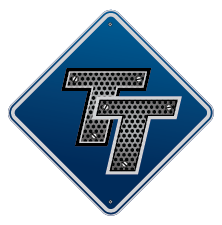
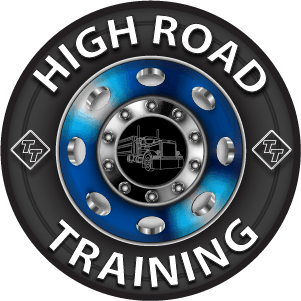
 TT On Facebook
TT On Facebook
Hi everyone, I used to drive over 8 years ago, and i am now going to orientation with Shcneider. Schneider accepted my old experience and said i could just have 4 days orientation then bam right in a truck all by myself. So i asked if i could still get extra training because i want to be as prepared as possible once i have my own tuck. and they agreed and i am going for 3 week training instead. I am relieved . but when i drove a truck before i only went up a steep hill once and i panicked because i was afraid to shift out of gear to the next lower gear needless to say the truck died and now the truck was stopped on a steep incline with cars right on my bumper. i waved everyone to go around me. i was terrified i was going to roll backwards. i finally got it into gear and made it slowly up the hill and still was afraid to change gears. I need help to understand how and when i shift to the next lower gear as i go up, or am i going about shifting the wrong way? Can anyone help?